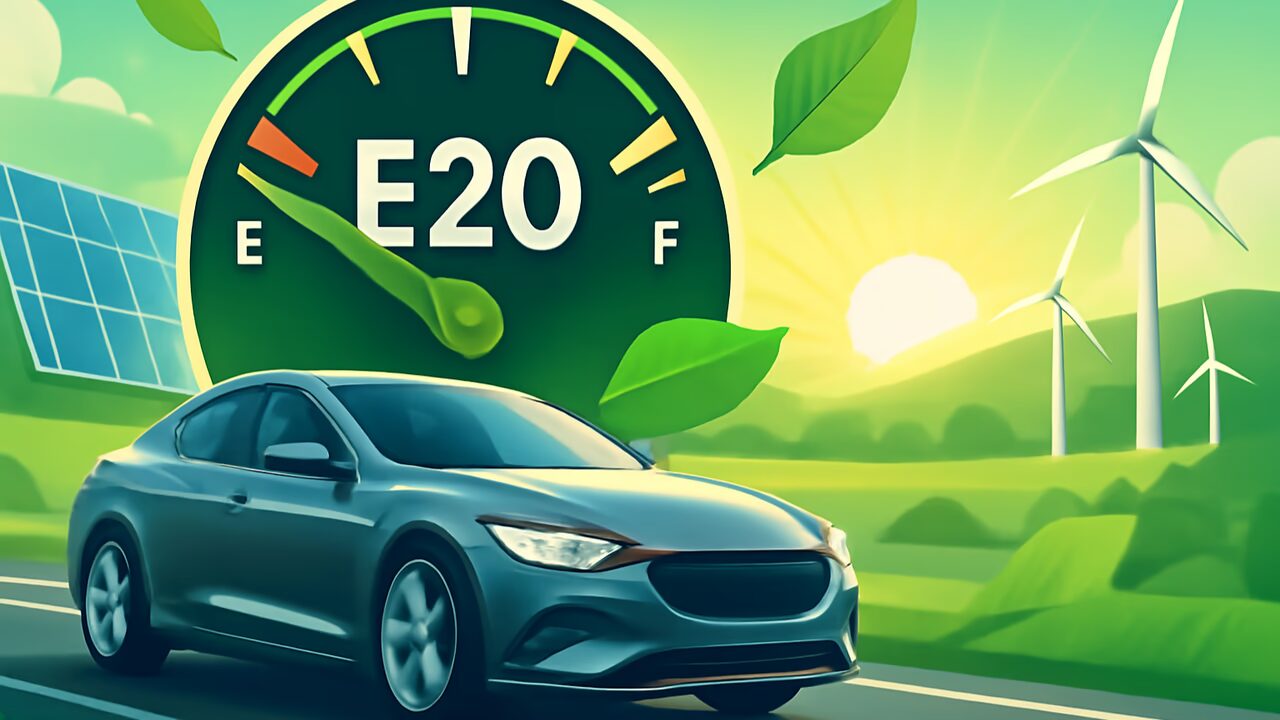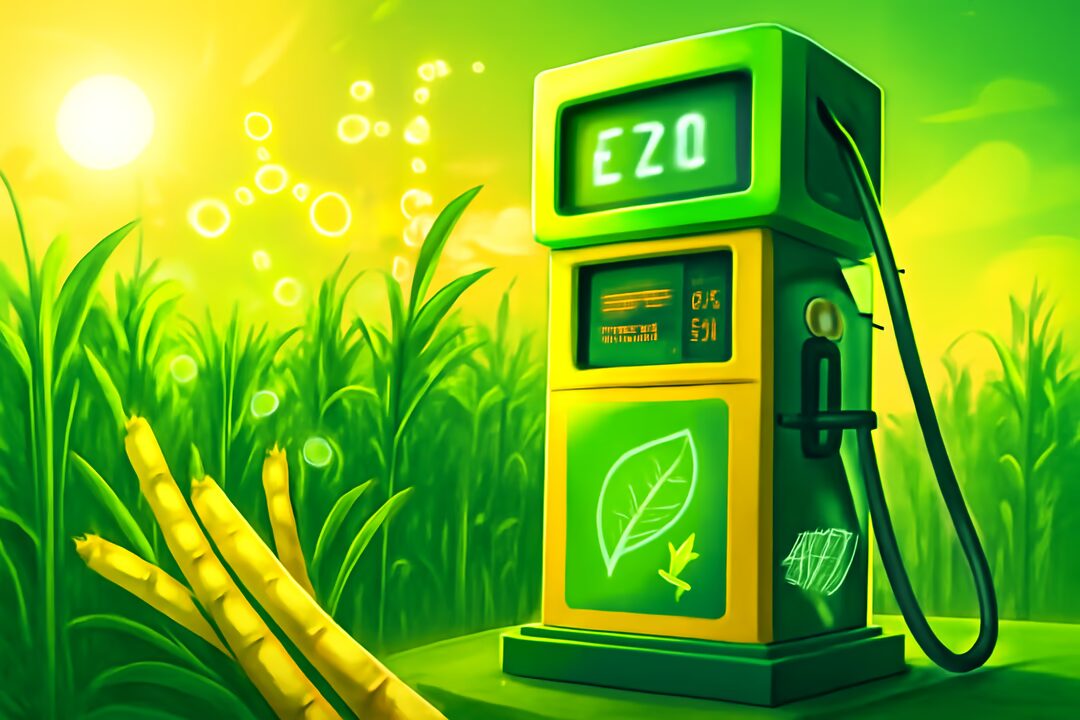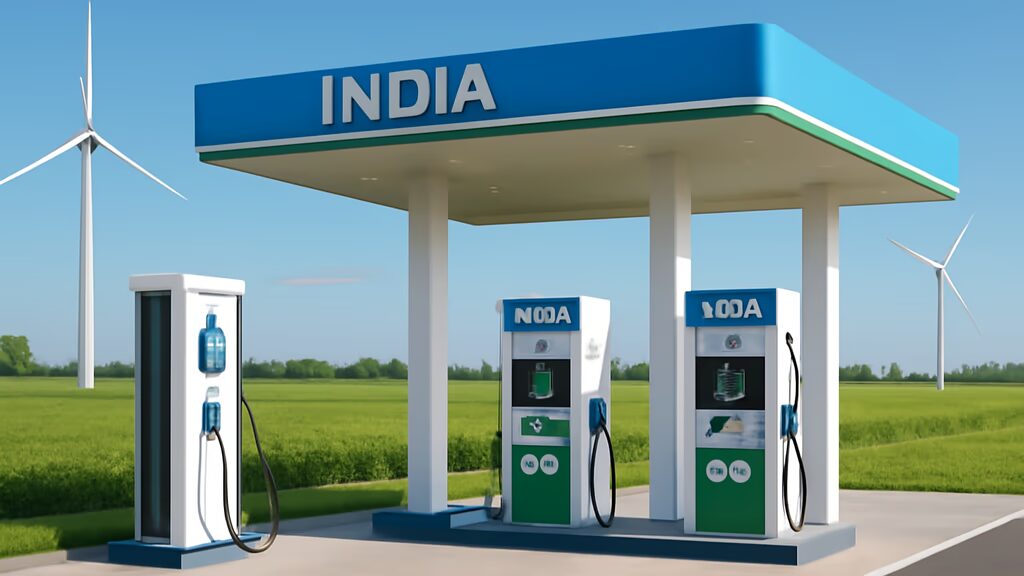
With the introduction of the E20 ethanol blend in India, the central government is taking a major step towards greener energy and revolutionising the mobility sector. The significant shift to green fuel resources has already been implemented across the country, ahead of its primary 2030 target. However, a major concern arises among vehicle users about its impact on the engine life and prices. This blog will break down all the doubts regarding the E20 Fuel implementation一its explanation, its benefits, possible challenges, and how it will affect your wallet.
ALSO READ- IndiaAI and National Cancer Grid Launch Program to Boost AI in Cancer Treatment
What is E20 Fuel?
The E20 Fuel is a petrol blend for 20% ethanol and 80% gasoline一means in every 100 ml there is a mix of 20 ml of ethanol, which is an eco-friendly biofuel derived from sugarcane, biomass or corn and 80 ml of petrol.
As an oxygen-rich, alcohol-based fuel, Ethanol has cleaner combustion, high octane rate (108.5, which is higher than petrol), less tailpipe emissions and improved engine performance. It is produced from sustainable sources such as barley, sugarcane, maize, wheat and corn.
The central government, along with the Ministry of Petroleum & Natural Gas (MoPNG), has introduced this initiative under the Ethanol Blend Programme.

Ethanol Blended Programme (EBP):
As the E20 fuel was initiated under this programme, let us have a glance at the timeline and the purpose the programme served:
- In 2001, the pilot project was implemented in these sites: Miraj (Maharashtra), Bareilly (UP) and Manmad (Maharashtra).
- In 2003, it was officially introduced with 5% ethanol blending in 9 states and 4 Union Territories.
- From November 1, 2006, the programme was extended to 20 states, with Oil Marketing Companies (OMCs) such as Indian Oil Corporation, Hindustan Petroleum, and Bharat Petroleum implementing oil blending.
- The Cabinet Committee on Economic Affairs (CCEA) was seeking to achieve the E20 target by 2030; however, it had completed before the target year.
- By 2022, the ethanol blend rose to 10%, covering the entire nation.
- The blending was achieved at 11.8% in 2023 and then 15% in 2024.
- Recently, the government plans to achieve a 20% blend by 2030, surpassing its original goal.
Why Does It Matter?
The E20 petrol blend programme has maintained its rollout pace all over India, ahead of its target in 2030.
- The purpose of introducing E20 fuel is to control greenhouse gas(GHG) emissions such as CO (carbon monoxide), NO (nitrogen oxide) and hydrocarbons. As per reports by NITI Aayog, sugarcane is a more efficient resource for ethanol blend, achieving 65% less greenhouse effect.
- The government intends to reduce dependence on imported crude oil, which costs $130 billion, and also stabilise energy supply.
- Its implementation will economically support Indian agriculture as incentives by clearing sugarcane payment liabilities and promoting the cultivation of crops required for ethanol production. As a result, the earlier Rs. 48,000 crore, which was given to the foreign suppliers, will now go into the hands of farmers.
- Furthermore, employment prospects in OEM (Original Equipment Manufacturing) will increase.
- Ethanol is a biodegradable fuel and emits less harmful fumes in the environment. This revolutionary shift will help urban cities to improve air quality and combat respiratory issues.
- The programme is part of the government’s commitment to ‘Net Zero’ carbon emissions to be achieved by 2070. It also coincides with the Nationally Determined Contribution (NDC) on climate change.
- Moreover, ethanol blending will improve vehicle performance. It enhances acceleration, suits modern compression engines, and has the least impact on mileage.
Acceleration, emissions, and engine performance-
Acceleration Performance:
- Reports by the government and OMCs claim that E20 has better acceleration capabilities than E10 fuel (ethanol blend 10%).
- Ethanol blend has a higher octane rating of 108.5, which is more than petrol (84.4), with smooth acceleration.
- Ethanol absorbs more heat through evaporation, which cools the air temperature in a vehicle’s engine. It increases air-fuel mixture density and improves engine performance.
Emissions:
- E20 fuel is efficient in reducing 30% carbon emissions, improves tailpipe emissions and provides cleaner fuel for urban regions.
- As this fuel is generated from renewable resources like sugarcane, corn, maize, wheat, barley, etc., it generates less greenhouse gas and supports a sustainable environment.
- The E20 under EBP is connected to India’s objective of a Net Zero by 2070 roadmap.
Engine Performance:
- Vehicles that are E10 compatible have a minimum impact with E20 fuel, only 1-2%. Meanwhile, vehicles manufactured before 2023 have a 6-8% effect.
- Ethanol has a lower energy density (40 MJ/kg), while pure petrol has (42 MJ/kg). This means E20 needs to burn more than petrol to achieve the same energy efficiency.
- E-20 compatible engines with high compression ratios have high power potential.
- However, E20 fuel may degrade plastic, metals and rubber in older vehicles that are not compatible.
Insurance Controversy-
Rumours: Online rumours are circulating all over the media, and other resources suggest that motor vehicle insurance may become void if engine damage occurs due to the use of E20 petrol. The concerns have sparked in vehicle owners, fearing that their insurance claim may get rejected if their vehicles are not E20 compatible.
Reality Check: As announced by the Ministry of Petroleum and Natural Gas (MoRTH), using E20 fuel does not void their vehicle insurance. They decline the false rumours and misinformation that are spread across the internet through social media posts. However, some risks need to be taken care of:
- There is an exception that some companies may deny or reduce claims on E20 non-compatible vehicles on the grounds of “wrong use of fuel” or “gross negligence”.
- Vehicle owners with older engines may face issues in this matter.
- Firstly, check the manufacturer compatibility and follow the instructions in the owner’s manual.
- Older vehicles can be upgraded with new parts.
- Keep handy fuel purchase records from reliable sources.
- Add-on covers (misfuelling) are beneficial in some cases.
Public Concerns Over E20 Fuel-
- Mileage Issues: People are concerned about efficiency loss, especially in older vehicles that may increase their running costs. It requires more energy to burn than petrol.
- Engine Damage: Non-compatible E20-fuelled vehicles may face engine damage or risk vehicle parts. Vehicles with older versions cannot handle the E20 petrol blend. However, the 2023 MY model may align with the performance of E20, and companies are now manufacturing compatible vehicles. It also questions the engine’s durability.
- Void Vehicle Insurance: Many people fear that, as their vehicles are not E20 fuel compliant, their insurance claims may be rejected by companies.
- Rapid Implementation: The fuel is not tested or calibrated on all vehicle types. This raises stress on vehicle performance due to non-compliance and hidden costs with fuel changes.
- Low Energy Generation: As ethanol takes more energy to burn than petrol, the vehicle owners are worried about an increase in actual fuel per km. This makes it a less cost-saving option.
- High Price: The refining cost of ethanol is higher than petrol. The public is concerned about pricing, as currently the price of petrol is higher, which is sparking speculations that E20 fuel will be costlier.
Programme cost-
Below is a proper breakdown of the E20 Fuel programme implementation cost. Check it out:
Ethanol Procurement Cost:
- Average Ethanol Procurement Cost (2024-2025) = Rs. 71.32/litre (includes transportation cost + GST)
- Maize-based Ethanol Cost = Rs. 71.86/litre (higher than other ethanol sources)
- The cost of Ethanol procurement is higher than the petrol refining cost, indicating a high cost of the final product.
Production Cost:
- Ethanol cost = Rs. 61 per litre + GST
- Pure petrol cost is Rs. 95 per litre
- Blending both may neutralise the cost along with VAT, excise duty and taxes.
Payment to Farmers for Procuring: Rs. 40,000 crore per year
Savings from Crude Oil Imports: Rs. 43,000 crore per year
Infrastructure Cost: Building tanks, blending facilities, transportation, pump upgradation and vehicle engines
Final Benefits:
- Economic boost
- Income to farmers
- Benefitting the environment with low-emission fuel
- Savings from imports

What’s Next?
With the green fuel revolution, the government is planning its next steps for the E20 Fuel Program and future implementations:
- The government is roadmapping continuous consolidation and implementation of E20 fuel with enhanced infrastructure development and vehicle capabilities until October 2026.
- It focuses on extensive stakeholder consultations, monitoring, research and communication for smooth management.
- The Inter-Ministerial Committee (IMC) plans to go beyond E20 fuel blending. With focused calibration and testing to ensure technical, economic and environmental feasibility.
- They are encouraging automobile makers to manufacture more E20-compatible vehicles and Flexible Fuel Vehicles (FFVs) to adjust to higher ethanol blends.
- Developing infrastructure such as transportation, petrol pumps, blending and storage facilities to support E20.
- As E20 is part of India’s energy security and Net Zero emissions target by 2070, with biofuels. The government under this programme is trying to promote other biofuels such as compressed biogas and CNG to complement ethanol blends.
FAQs-
The E20 fuel is a blend of 20% ethanol and 80% petrol in 100 ml of fuel. It is an alcohol-based, highly combustible biofuel with low carbon emissions.
India is promoting E20 fuel to end crude oil imports, financially support farmers, encourage green energy, and move to net zero emissions by 2070.
No, an official statement from the government has been released that using E20 does not void your insurance. However, there are certain concerns for non-compatible vehicles.
Right now, the procurement cost of ethanol is higher than petrol, which makes it a less cost-saving fuel.
There is the slightest energy drop from 6% to 8% on vehicles, as E20 needs more energy to burn than pure petrol. This increases the running cost of the vehicle.
Vehicles manufactured after 2023 are all E20-compliant. However, older vehicles are not compliant with handling E20, and it causes damage to vehicle parts. Vehicle owners must read the user manual to check E20 eligibility.
